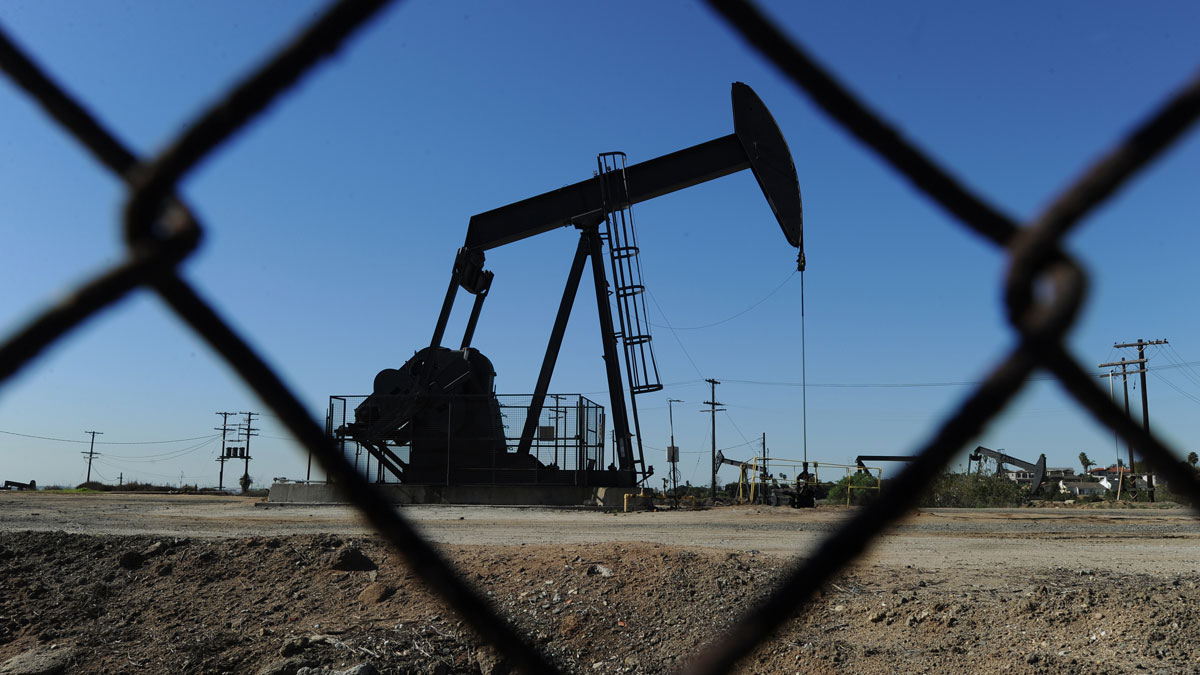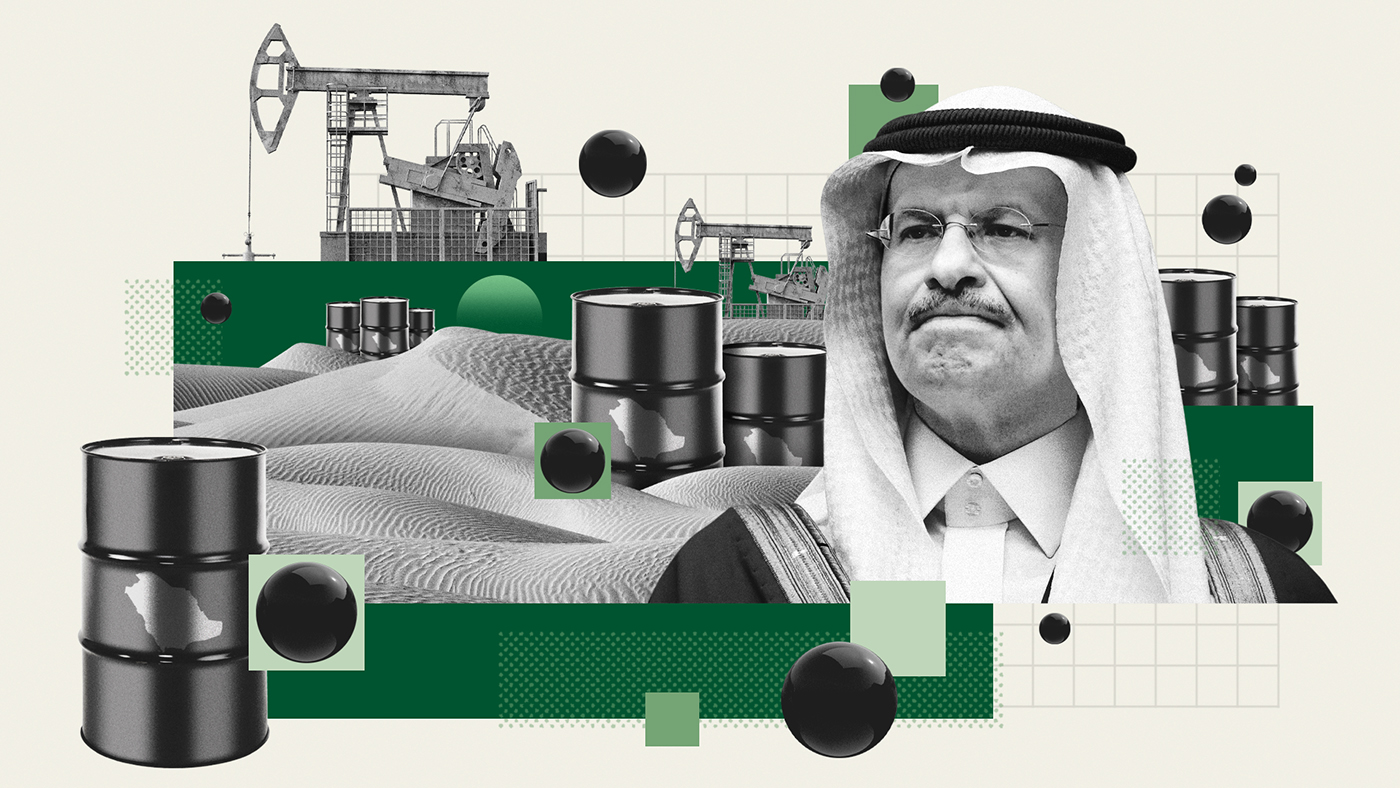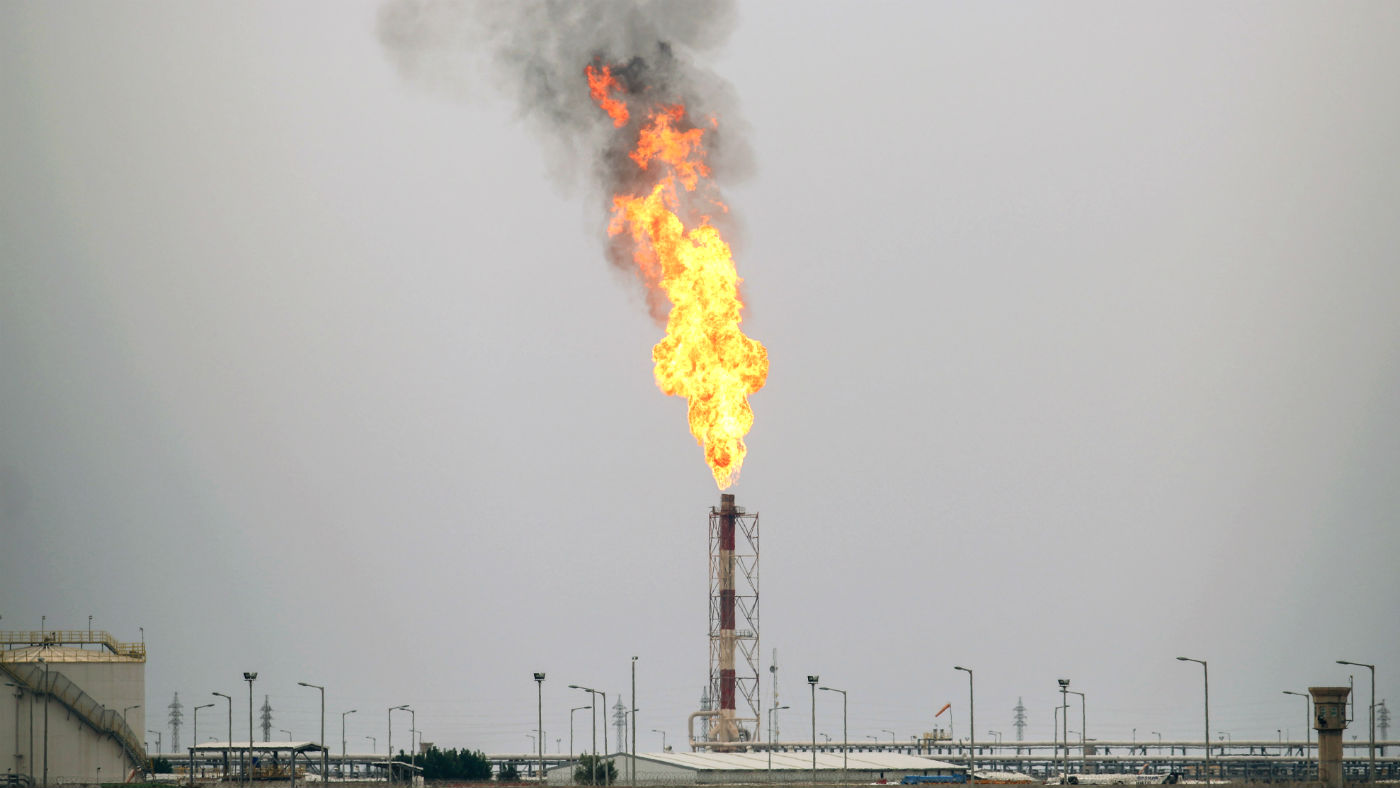Oil price posts two-year highs - but how long can it last?
Brent rose above $59 a barrel this week, its best third-quarter showing since 2004

Oil price recovery is capped ahead of reserves data
28 March
The oil price has regained some ground today, but a relief rally is being capped by speculation that oil reserves data due to be published this afternoon will add to the bearish picture on supply.
US benchmark West Texas Intermediate has fallen well below $50 a barrel of late, while international benchmark Brent Crude was testing support around this level yesterday.
The Week
Escape your echo chamber. Get the facts behind the news, plus analysis from multiple perspectives.

Sign up for The Week's Free Newsletters
From our morning news briefing to a weekly Good News Newsletter, get the best of The Week delivered directly to your inbox.
From our morning news briefing to a weekly Good News Newsletter, get the best of The Week delivered directly to your inbox.
Both have been under pressure as data continues to show that global reserves of crude oil are growing despite the agreement between Opec, Russia and others to cut 1.8 million barrels per day from output.
Lined up against this is an underwhelming growth in demand, a comparatively modest impact on exports from countries subject to the deal and, most critically, a surge in drilling activity in the US shale sector.
Against this backdrop, the news yesterday that armed factions in Libya have disrupted supply at the Sharara and Wafa oil fields has prompted a wave of buying.
Supply from Libya has fallen by a third, or 252,000 barrels, says Reuters.
A free daily email with the biggest news stories of the day – and the best features from TheWeek.com
Oil is also being helped by the weaker dollar, which has been sliding since Donald Trump's policy agenda ran into Republican divisions in congress. It's now hovering around levels last seen in November around the time of his election.
A weaker dollar makes oil cheaper for overseas buyers and is therefore seen as positive for demand.
West Texas Intermediate was up 1.2 per cent this afternoon to $48.31 a barrel, while Brent crude was up by a similar margin to $51.35.
Another big test will take place later today when the latest weekly reserves estimate from the private sector American Petroleum Institute is published.
Analysts are predicting another big build. If this is replicated in official data on Wednesday, stockpiles at the key Cushing, Oklahoma delivery hub will hit an all-time high.
When oil reserves rise investors become nervous, especially as the number of active drilling rigs in the US has been going up all year. Oil price bulls are adamant that the Opec cuts will see reserves swing into reverse in the second half of the year.
Some want Opec to pledge to extend its supply cuts beyond the current June cut-off date. Reuters says Iran's Oil Minister Bijan Zanganeh told reporters yesterday that this was "likely".
Oil price slides despite review into extending output cuts
27 March
Traders are disappointed in lack of certainty as US shale sector continues to increase supplies
A joint committee of key Opec and non-Opec oil producers who are part of a six-month deal to cut oil production has called for a review into extending the current agreement beyond June.
Representatives of Opec members Kuwait, Algeria and Venezuela and two non-Opec nations, Russia and Oman, met in Kuwait on Sunday to review the deal, which triggered a major oil rally when it was announced in November and came into force in January.
In a joint statement they "requested a technical group and for the Opec Secretariat to 'review the oil market conditions and revert... in April 2017 regarding the extension'", says Reuters.
The oil price has been sliding of late – it dropped close to two per cent last week – and there were hopes that production cuts would help to stem the losses.
But the oil price has continued to fall today. Brent crude, the international benchmark, has slipped 0.5 per cent to 50.53 a barrel, while its US counterpart West Texas Intermediate dropped 0.75 per cent to $47.61 a barrel.
Reuters says that one of the reasons for the persistent negative sentiment is that the statement following Sunday's meeting was not more definitive.
An earlier draft of the statement, leaked to the press, reportedly "recommended" an extension of the cuts.
Supply remains the key issue in the market as global inventories remain near record highs. Reserves in the US, the largest market in the world, have been increasing all year.
Another key trend is also weighing on oil: the rebound in the US shale oil sector, the key target of the oil production war over the past two years. It has been adding drilling rigs all year since oil went back above $50 a barrel.
The American consultancy firm Bakers Hughes says that 21 rigs were added last week, taking the total up to 652, says MarketWatch. The count has increased in every week but one this year and the pace is picking up, too.
Many analysts fear that shale oil output could rise enough to offset the Opec and non-Opec cuts, or by at least enough to prevent those cuts from returning the market to supply deficit.
Petrol stocks fall drives oil price relief rally
23 March
Increase has been cautious and mood remains bearish on global supply
International oil price benchmark Brent crude dipped below $50 a barrel for the first time in four months yesterday, reports the Daily Telegraph.
Having peaked at close to $57 a barrel last month and been above $52 this week, Brent's intra-day nadir emphasises the slump of late amid a bearish mood on global supplies.
However, there was some respite overnight, with the oil price rebounding following the Energy Information Administration's (EIA) weekly report. Despite it showing a massive build of five million barrels in US crude reserves last week, traders appeared instead to focus on its finding that petrol stocks dipped by a similar margin, says MarketWatch.
Brent was up 0.7 per cent to a little less than $51 a barrel this morning, while its US counterpart West Texas Intermediate increased from a low of $47.50 yesterday to $48.37.
Nevertheless, Reuters reports the bounce has been "cautious" as investors continue to be wary about stubbornly high supply.
Oil had rallied from the low-$40s to well above $50 after a deal to cut 1.8 million barrels a day from output, struck last November between oil producers including Opec and Russia.
Core Opec compliance with that deal has been strong, but the Telegraph says one member, Libya, is excluded and it has signalled it will increase supplies.
Ole Hanson, of Saxo Bank, also said that Iraq, another Opec member, and Russia are still behind on their pledges, which could yet cause the deal to "fall apart" altogether.
More critically, there are ongoing concerns about the scale of the recovery in US shale production, which could undermine the cuts.
The EIA said yesterday that US production had risen for a fourth consecutive week, to 9.13 million barrels a day. Traders see the booming crude reserves as evidence of the excess of supply in the country.
Oil price slides further on big US reserves gain
22 March
Market nervous after API report estimates a 4.5 million-barrel increase in US shale production last week
The oil price took another sharp tumble last night and continued to head lower in early trading after the latest data on US reserves, which added to the gloomy sentiment on supply.
Private-sector body the American Petroleum Institute (API) estimated that crude oil reserves grew by 4.5 million barrels last week, well above expectations for a build of 2.8 million barrels, say Reuters.
Brent crude, the international oil price benchmark, was down 1.6 per cent in London this morning, hovering a little above the $50 a barrel threshold. Its US counterpart West Texas Intermediate, which is more directly affected by the report, was down 1.5 per cent to $47.50 a barrel. It hit a high above $54 earlier this month.
More comprehensive figures on US reserves will come later today, when the Energy Information Administration (EIA) publishes its own report. If that confirms the above-expectation rise, then oil may have far further to fall, warn experts.
Jeffrey Halley, senior market analyst at futures brokerage OANDA in Singapore, said: "If the API stuck the knife in, tonight's EIA Crude Inventory figures may twist it.
"A blowout above the 2.1 million barrel increase expected may well torpedo oil below the waterline."
The oil market rallied strongly following last November's deal by producers including Opec and Russia to cut 1.8 million barrels a day from output, which it was hoped would help to end two years of persistent oversupply.
With compliance with the deal reported to be high, prices have remained steadily above $50 a barrel so far this year. However, this has led US production to surge and, after two years of producers driving down costs, renders much shale drilling profitable again.
Reuters says US production is up eight per cent to 9.1 million barrels a day since the middle of 2016. Some believe it could go to 9.5 million barrels or even higher this year – which could be enough to keep the market oversupplied.
Oil price down again ahead of inventory data
21 March
Brent falls 0.7 per cent to $51.30 a barrel as investors wait for American Petroleum Institute report
The oil price was heading lower again this afternoon ahead of tonight's publication of the US inventory data by the American Petroleum Institute.
Unexpected reserve draws in both this and a broader dataset published by the Energy Information Administration prompted a respite rally last week after days of decline.
Oil generally has been in a downward trend in recent weeks, as continuous stock builds and rising rig counts in the US emphasise the rebound for shale oil since trading bounced back above $50 a barrel.
That in turn could undermine the 1.8 million barrels a day of cuts promised by the likes of Opec and Russia until June.
By late afternoon in London, Brent crude, the international oil price benchmark, was down 0.7 per cent to $51.30 a barrel. Its US counterpart West Texas Intermediate was down 0.9 per cent to $47.80 a barrel.
Oil had rebounded overnight, after reports focused on speculation that Opec members are pushing for its cuts agreement, which prompted a sharp oil rally last November, to be extended.
This is by no means assured: sources told Reuters the group wants "the backing of non-Opec oil producers, which have yet to deliver fully on existing cuts".
Tamas Varga, analyst at London broker PVM Oil Associates, said: "Talk of the extension is supporting prices, together with the weaker dollar.
"But any rally might run out of steam soon as the underlying sentiment is still negative."
-
 Phish food for thought: Ben & Jerry’s political turmoil
Phish food for thought: Ben & Jerry’s political turmoilIn the Spotlight After a landmark demerger by Unilever, spinning off their ice cream brands, a war of words over activism threatens to ‘overshadow’ the deal
-
 Magazine solutions - December 12, 2025
Magazine solutions - December 12, 2025Puzzles and Quizzes Issue - December 12, 2025
-
 ECHR: is Europe about to break with convention?
ECHR: is Europe about to break with convention?Today's Big Question Keir Starmer calls for European leaders to ‘push for modernisation of interpretation’ of 75-year-old asylum laws in bid to counter populist right
-
 How might the Israel-Hamas war affect the global economy?
How might the Israel-Hamas war affect the global economy?Today's Big Question Regional escalation could send oil prices and inflation sky-high, sparking a worldwide recession
-
 Recent mega-mergers could signal a turning point for the US oil industry
Recent mega-mergers could signal a turning point for the US oil industryTalking Point Both Chevron and Exxon have recently spent billions to acquire smaller oil companies
-
 Has Saudi Arabia lost control of oil prices?
Has Saudi Arabia lost control of oil prices?Today's Big Question Kingdom goes it alone to cut production, risking tension with US and reigniting cooling inflation in Europe
-
 US angered by Opec+ oil cut
US angered by Opec+ oil cutSpeed Read Energy prices to rise further as producers slash supply by two million barrels a day
-
 Global oil demand forecast lowered for 2020 and 2021
Global oil demand forecast lowered for 2020 and 2021Speed Read IEA report says jet fuel demand remains the major source of weakness
-
 Are US-Iran tensions flaring again?
Are US-Iran tensions flaring again?In Depth Trump threatens military action over Twitter
-
 Can a deal be struck to raise oil prices?
Can a deal be struck to raise oil prices?In Depth Opec+ will convene today over video link in a bid to boost crude
-
 What do negative oil prices mean?
What do negative oil prices mean?In Depth Perfect storm of oversupply and storage shortages sees producers paying to get rid of US crude